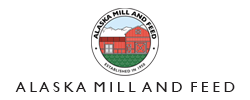Winter Care for Chickens
Posted by Kimberly McCourtney on Sep 19th 2023
WINTER FEEDING TIPS
Feed intake varies with season, temperature, age, size, rate of lay, and a ration’s energy density
A Chicken’s body operates most efficiently at an ambient temperature of 70-75F
Cold weather increases a bird's energy requirements.
In cold weather, chickens eat more to obtain additional energy to stay warm
Feed a small amount of scratch in the morning or evening to kindle body warmth
Stimulate appetites with warm mash or by stirring up rations
POISONOUS FOODS FOR CHICKENS
- Chocolate
- Apple Seeds
- Pits from peaches, cherries, apricots, nectarines, and pears. The fleshy part is ok.
- Avocado
- Onions
- Tomato plant, including leaves and the stem. The fruit is fine if it is ripe.
- Raw beans
- Potato Plant and uncooked potatoes
- Caffeine, salt, tobacco
WATER
A chicken’s body contains more than 50% water. An egg is 65% water.
Egg production will be maintained if they have plenty of warm water to drink.
Ideal water temperature is 50-55F
The average chicken drinks between 1 to 2 cups of water per day
FROSTBITE CARE
Prevent by rubbing Vaseline on combs and wattles.
Apply damp, warm cloth to unfreeze. DO NOT RUB. Apply antiseptic ointment. Keep away from other birds until healed
Frostbitten combs once thawed are red, hot, and swollen. They may peel, get scabby or turn black.
MUST-HAVE COLD WEATHER SHELTER
REQUIREMENTS
- Provide adequate space for the number of birds
- 1 nest box for every 3 - 4 hens
- 3’ - 3.5’ of floor space for every mature chicken
- Is well ventilated and draft free
- Protects from the wind and sun
- Keeps out rodents, wild birds, and predatory animals
- Has adequate roosting space
- 12”-14” per bird on a flat 2”x2” board
- Is easy to clean
- Is situated where drainage is good
- Bedding is 3”-5” deep, using straw, hemp, pine or white shavings. No cedar.
- Keep feeding and water areas clean
TEMPERATURE CONTROL
Chickens don’t require heat to be healthy
Consistent temperature (40F at roost height) will help maintain egg production
Protect the North side of your coop
Can use insulation with a vapor barrier to prevent moisture
South facing windows or doorways to provide natural light
If your birds go outside regularly, continue that routine as it gets colder to help them adjust If it is below 15F outside, keep them inside your coop
LIGHTING
In a small coop, a well placed white incandescent light bulb should supply sufficient light and heat. Avoid fluorescent lights.
Supplement daylight hours with 14-17 hours of light to maintain egg production. Use a timer.
Red lights keep your chickens warm and reduce stress
White Light (enough to read a newspaper by) will encourage continued laying
For a 100 sq ft coop = one single 100watt bulb 4.5 ft above roost with a reflector / 3ft without reflector

